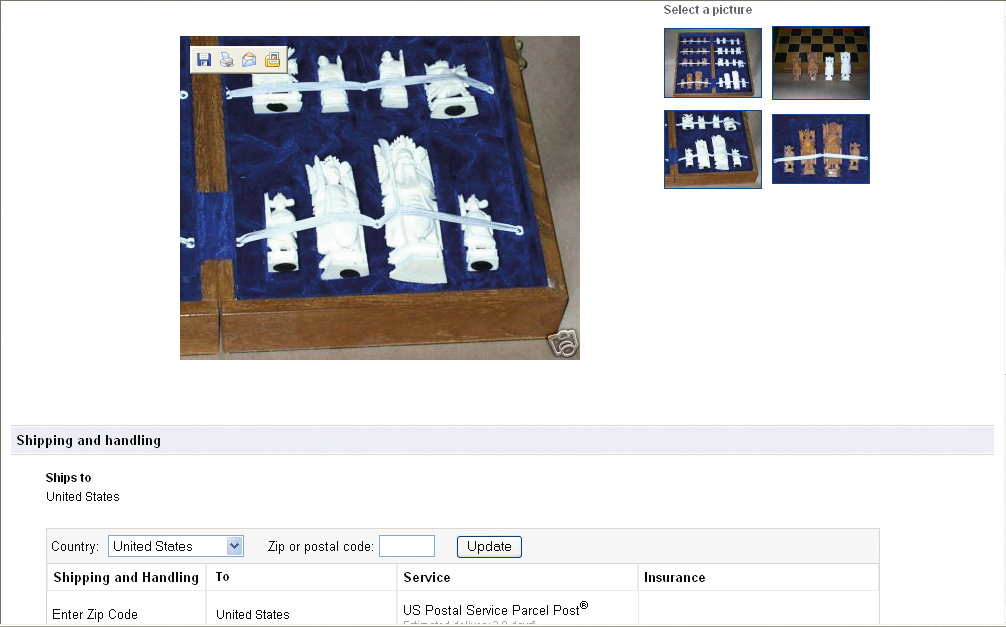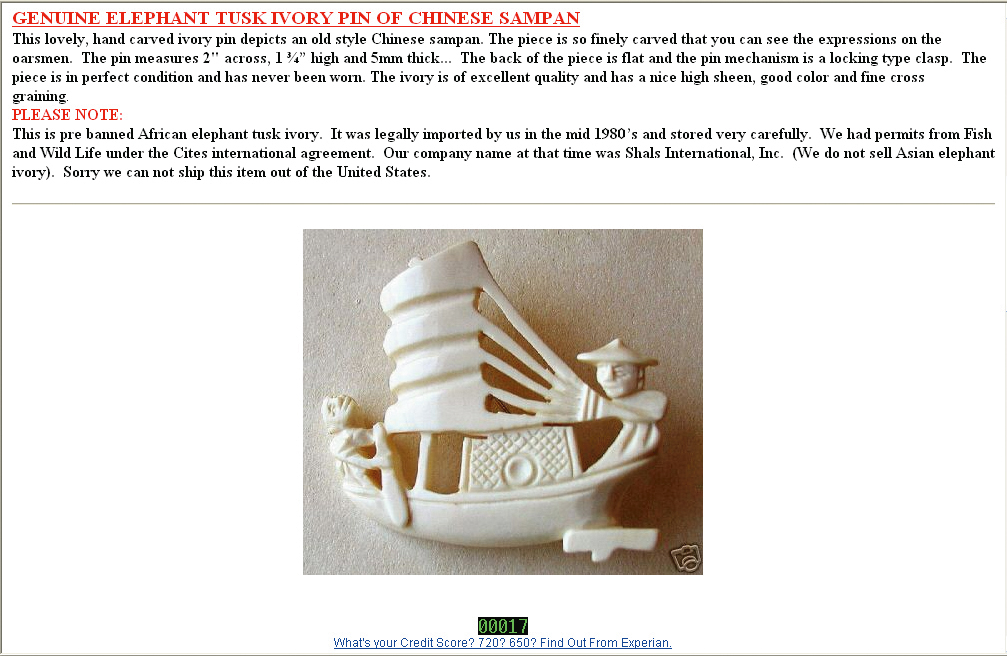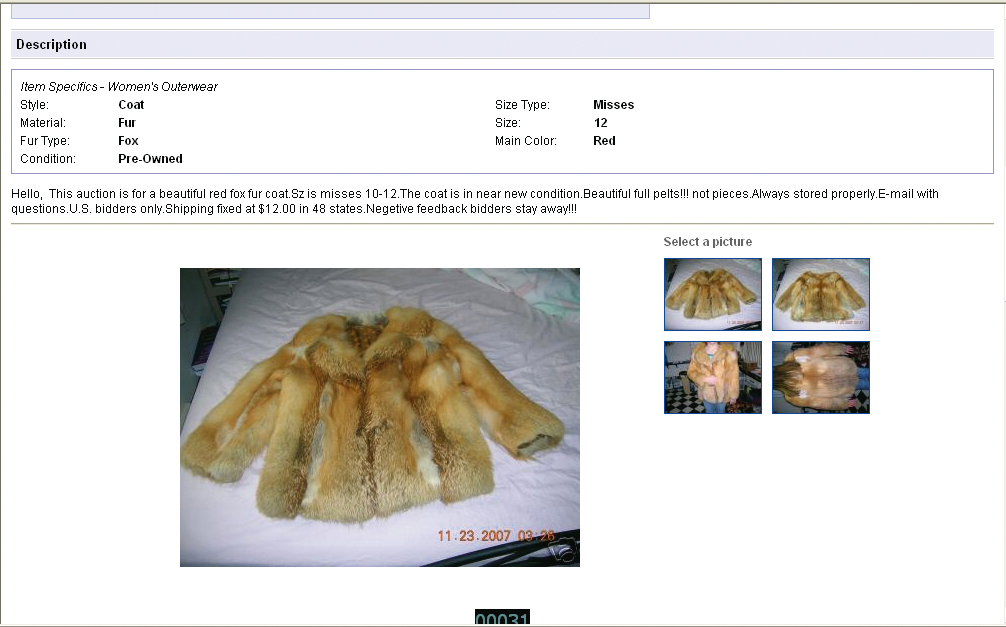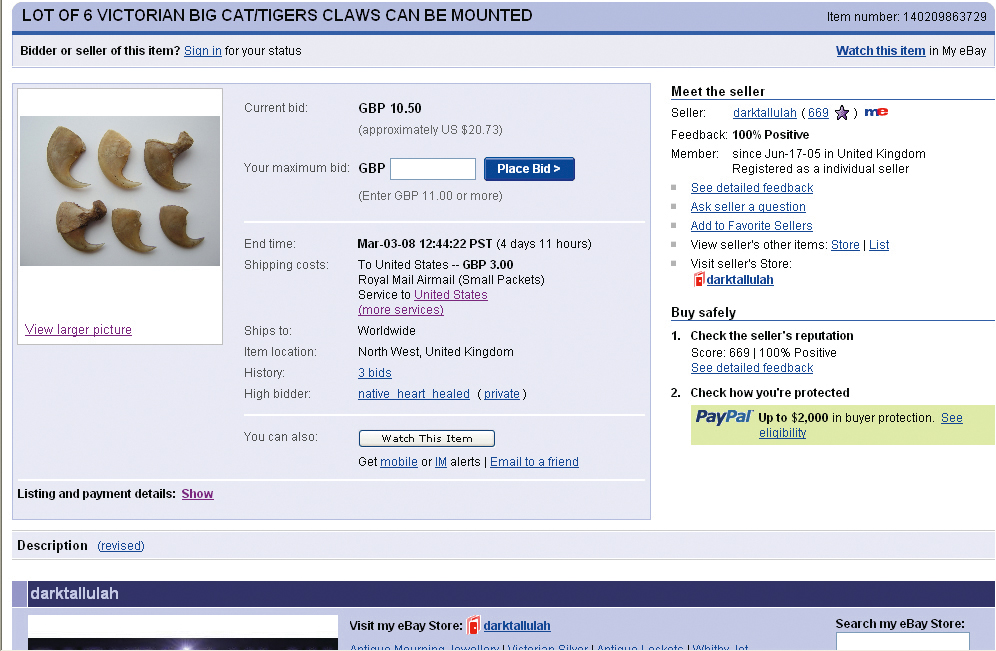The Crime Web
First published in Sanctuary Asia,
Vol. 28
No. 4,
April 2008
By B. K. Sharma
An Indian police service officer, the author is one of India’s most knowledgeable and experienced experts on the lethal, illegal wildlife trade. He was awarded a Sanctuary Wildlife Service Award in 2005 for exemplary work done in protecting wildlife and writes frequently for sanctuary. He reveals here the shocking scale at which wildlife contraband traders use the internet with impunity, at the cost of rare and endangered species.
When Hisayoshi Kojima, the Indiana Jones of butterfly smugglers, offered my friend Ed Newcomer, a special agent of the U.S. Fish and Wildlife Services posted in Los Angeles, a giant swallowtail Papilio homerus (its velvety black and gold wings are depicted on Jamaica’s $ 1,000 bank notes), the Luzon peacock swallowtail Papilio chikae from the Philippines and the prized Queen Alexandra’s birdwing from Papua New Guinea, little did he realise that he was already in the trap laid by Newcomer. If the Internet had made wildlife crime easier for Kojima, it had also guised Newcomer to pose as a potential customer, using a fictitious e-mail. For years, Kojima had been involved in widespread trafficking of endangered and CITES-protected butterflies, which he would obtain from nearly every continent for high-end collectors in the U.S. Investigators found that most of Kojima’s advertising and sale was done through a website he maintained in Kyoto, Japan. Newcomer established contact and purchased a pair of Ornithoptera alexandrae for $8,500. Kojima offered to sell him hundreds of endangered butterflies valued at $294,000. Newcomer communicated through a Voice Over Internet Programme (VOIP) called Skype and Kojima showed him the rarest butterflies for sale from his Kyoto home through a webcam. All the conversations were recorded on audio and video. Newcomer made numerous purchases from Kojima and each was smuggled to U.S.A under false U.S. Customs declarations. Newcomer obtained a 17 count indictment against Kojima for smuggling and violation of the Endangered Species Act. He finally lured Kojima to Los Angeles, U.S.A., where he was arrested at the airport on July 31, 2006. He pleaded guilty to all the charges and was sentenced to 21 months in federal prison and fined $38,731 in April 2007.
This was a success story, but even such stories, sadly, are the exceptions, not the rule. All too many criminals get away undetected.

Ivory items (above) come at a great cost. Elephants are brutally killed to supply this deadly trade. According to IFAW’s investigations, more than 90 per cent of the wildlife products being auctioned violated the (minimal) ivory listing regulations of the respective eBay website. The recent eBay announcement of a complete ban on online auction of ivory, in the wake of COP 14, is a welcome step. Photo: IFAW.
A study by the Humane Society of the United States in 2002 revealed that nearly 900 ivory pieces were listed for sale on eBay every single day. The Wildlife Conservation Society reported in State of the Wild – 2006 that 1,000 ivory items were advertised on eBay for sale per week between February and May 2004. In April 2004, Traffic Europe’s study revealed a tremendous increase in the amount of Russian caviar offered on sale illegally on the Internet. On monitoring the nature and scale of the wildlife trade for just five types of products and live animals on English-language websites in the United Kingdom, the International Fund for Animal Welfare (IFAW) discovered that over 9,000 wild animal products, specimens and live wild animals were available per week. The list included 5,527 individual elephant products, including an elephant’s foot as a barstool, 146 live animals, including a seven-year-old gorilla, a Siberian pet tiger and a two-year-old “sweet-natured” giraffe. As many as 526 turtle products from 25 listed traders or exporters, and 2,630 items derived from reptiles and 239 wild cat products that included lion, cheetah, leopard, bobcat, lynx, ocelot, caracal and puma were available for sale.
In October 2006, IFAW’s month-long study of private and commercial legal and illegal trade in wild animals on Dutch-language websites detected 150 sites selling endangered species of mammals, land tortoises, sea turtles, protected birds, reptiles and amphibians. IFAW also investigated the online portal ‘Marktplaats’, an eBay subsidiary site in the Netherlands, during the same time and found 8,000 offers of endangered species of wild birds alone each day.
They may sound horrific, but these statistics are little more than the proverbial tip of the iceberg. There has been no survey of similar sales on the hundreds of websites in different languages worldwide. The studies are primarily confined to auction sites and do not take into account the illegal trade that occurs through mailing lists and secured websites. Nonetheless, the studies suggest the extent and magnitude of the illegal trade. Though impossible to quantify, there is no denying that the illegal wildlife trade on the Internet is alive and well and growing by the minute.

How to kill an elephant with a mouse? All ivory and other wildlife items you see here were found on eBay websites worldwide. Cyber laws vary greatly across countries, as do the guidelines issued by auction sites such as eBay. The world wide web has become the world’s biggest marketplace for illicit trade in wildlife, a trade so huge that it is second only to the trade in illegal arms and drugs.
The Nature Of The Trade
The single-most important factor fuelling the wildlife trade on the Internet is anonymity. While many sites are completely anonymous or used with pseudonyms, in other cases, privacy laws of countries protect users to the extent that law enforcement agencies cannot intercept communications, except through elaborate and time-consuming legal procedures that sellers are always able to outwit. Such sellers furnish fake names and addresses and are almost impossible to identify. They change e-mail accounts frequently and even use ‘cold servers’. Communications that begin in open fora often shift to private discussions through untraceable e-mails, discussion boards, message boards or chat rooms where the real deals are struck. Buyers take similar precautions, making it virtually impossible for any investigation to pinpoint the offenders.
The Internet has the biggest customer base in the world. It has converted the world into a virtual market place where a crocodile boot offered for sale in Mexico lands up with a customer in Japan or a shahtoosh shawl from India, in the U.S.A. The famous eBay site, with 33 national subsidiaries, is the single biggest auction site that provides a global online marketplace where “practically anyone can trade practically anything.” Millions of items get listed everyday on eBay, which is used as a trading platform by over 222 million registered users. eBay India has a community of over two million registered users across over 670 towns and approximately 12,800 sellers use the site as a primary or secondary source of income. www.kingsnake.com, which deals with herpetological businesses, provides links to 270 commercial reptile breeders and many importers, exporters and retail stores. www.waterwolves.com and www.aquabid.com have enormous client bases that trade in fish species.
The speed of transactions in Internet trading is an added advantage. Sales that once required personal meetings over several days now take place at the click on a keyboard. Records of such electronic transactions are short-lived. Even if a court order is available, it is difficult to get e-mail details from a service provider for a period beyond 30 days. The money trail is, of course, notoriously difficult to establish because of the frequent electronic transfers across varying accounts. Advertising a product on the Internet is normally very inexpensive. But auction sites like eBay charge low or no listing fees and take only a small percentage of the sale price. Independent sites are easy to set up and inexpensive to maintain.
The fact that investigations are inevitably cumbersome and relatively ineffective makes the use of the Internet even more attractive to criminals. What is more, cyber laws vary greatly across countries, as do the guidelines issued by auction sites such as eBay. By claiming antiquity, sellers manage to avoid site intervention, while in many instances, it is impossible to verify the legality of the furnished document. By and large, investigating agencies including police and forest officials in countries such as India lack familiarity with cyber investigations, and all too often, website administrators, quoting privacy concerns, refuse to supply complete information, even after a legal notice has been served on them. In truth, there is virtually no institutional mechanism to patrol the dark cyber world to proactively search for and detect violations. Police or forest officials must therefore wait for complaints to turn up on their tables and this is, understandably, a very ineffective way to investigate crime.

Success Stories
The case of Hisayoshi Kojima, as I mentioned at the start of this piece, was an exception. For us to enhance our capacity to deal with criminals who use the Internet requires constant, consistent and innovative methods, plus unprecedented cooperation between law enforcement agencies across nations. Predictably, so far, most countries have had a low enforcement success rate, but every success teaches us something and every failure points us in the right direction for future cases.
A joint investigation by Canadian and U.S. authorities against Mark Gleberzon of Toronto who had indulged in a series of unlawful transactions involving endangered species on a popular Internet-based auction site led to his conviction in October 2006. On a tip-off from the U.S. Fish and Wildlife Services, in December 2006, the Brazilian police seized 60 tarantulas, two scorpions and a turtle intended for sale on the Internet by Eduardo Galhardo of Sao Paolo. Based on information received from NWCIU, police in Norfolk, U.K. seized a computer and several CITES-listed species from the house of Mark Rowland. Investigations proved numerous transactions on eBay and other auction sites for over a year of protected species. Rowland was convicted in December 2005 and sentenced to eight months in custody. Cases of offer of sale of shahtoosh shawls and even a tiger skin had been detected on bazee.com in India. These instances were, however, not properly investigated.

Regulatory Strategies
Such examples of detection and successful prosecution of offenders are few and far between. There are not too many investigators who would patiently conduct a covert operation for several months to track down one wildlife offender, who might, in any event, be based in another country. Because cyber laws differ from country to country, extradition or deportation of foreign nationals for investigation or trial is difficult. The capacity to conduct cyber investigation is woefully inadequate in most countries. Internet Service Providers (ISPs) claim themselves as mere conduits and take no responsibility for the content of the sites they host. The bland self-regulation claims by site owners – especially auction sites – are often unreliable. The end result is that despite evidence and an enhanced recognition of the problem, the Internet is probably now the most widely-used medium for illegal wildlife trafficking.
The Way Ahead
The Internet will govern our lives in more ways than one in the days to come and the illegal wildlife trade is bound to increase with the growth of the Internet, unless effective regulatory mechanisms are put in place. Site owners have to initiate voluntary action to prohibit or remove attempts to buy or sell wildlife contraband. One site, eBay, must strictly enforce its animal and wildlife products’ policy across the board in all the countries it operates in. Other auction sites must adopt similar policies and ensure strict enforcement. The recent eBay announcement of a complete ban on online auction of elephant ivory, in the wake of COP 14, was a very welcome step.

Website owners need to establish effective reporting mechanisms to allow users to report any suspicious items. Effective institutional systems to report infractions of the law to enforcement agencies – by users, site owners and bodies like the Internet Watch Foundation – need to be devised. Wildlife NGOs can also play a crucial role in encouraging reporting, either directly or through them. In the event of lack of action, one can use sites like www.saferindia.com, recently launched by super ex-cop Kiran Bedi to enforce police intervention. The storage period of data by ISPs needs to be increased, if necessary through legislative enactments. And surely the system of data supply to enforcement officials must be less cumbersome. Awareness about the problem, both among the general public and enforcement officials will only rise through sustained public campaigns and private efforts.
It goes without saying that world police bodies such as the International Criminal Police Organisation (ICPO) or Interpol can play an extremely significant role in training enforcement officials and facilitating country-to-country cooperation for investigation and exchange of information, as was done in the case of cyber child pornography. The decision at the recently-concluded COP 14 at The Hague, Netherlands to convene a workshop during the current year of CITES member countries and experts should be implemented urgently. Management Authorities, enforcement officials, Internet trade experts, website owners and ISPs, together with representatives of NGOs must sit together to discuss the scope of the Internet wildlife trade, its impact on CITES implementation and the best way to implement enforcement. The line “If the buying stops, the killing will too” is all too true and it is time we defanged the most convenient hyper-mall for illegal trade in endangered species – the Internet.
Note: The views expressed in this article are those of the authors and do not necessarily represent the views of Sanctuary Asia, the Sanctuary Nature Foundation, or its Editors.
First Published in Sanctuary Asia, April 2008.






